#alain k
Text

Jerome K. Bloch by Alain Dodier
58 notes
·
View notes
Text
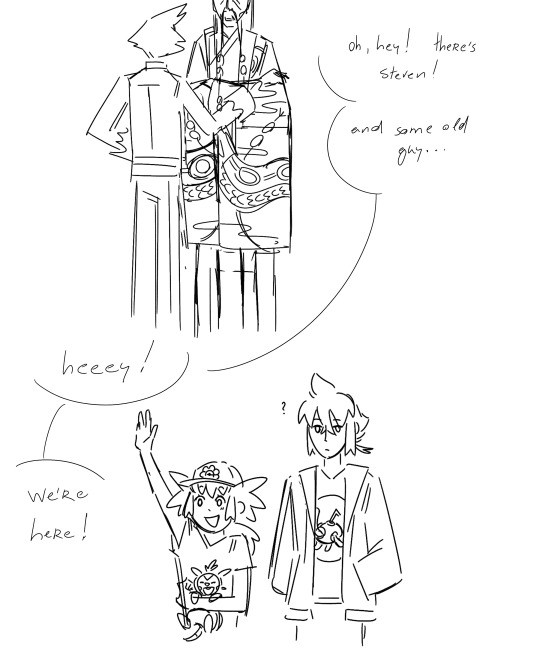
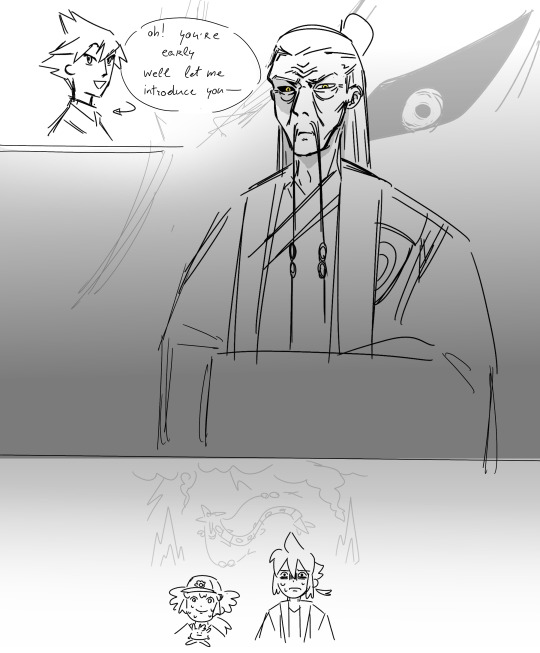
Day two - Dragon
i told you i was gonna use this as an excuse to show off some stuff
#pokemon#pokemon alain#pokemon steven#steven stone#pokemon mairin#trainer alain#trainer mairin#tsmeweek2024#tsme10thanniversary#theres lore behind this rayquaza but id need to link a word document#the short version is that its stevens shiny rayquaza from masters ex#i dont. have a name for him i just keep calling him the ancient rayquaza#which i c a n t k e e p d o i n g anymore bc horizons went and made a canonical shiny ancient rayquaza!#BECAUSE OF COURSE THEY DID!
32 notes
·
View notes
Text

Jérôme K. Jérôme Bloche by Alain Dodier
20 notes
·
View notes
Text
karşılaşmamız rastlantı değildi, seni bekliyordum.
ursula k. le guin - karanlığın sol eli
#ursula k. le guin#karanlığın sol eli#mülksüzler#rüzgar gülü#kitap#edebiyat#blogger#felsefe#blog#kitaplar#kitap kurdu#charles bukowski#alain de botton#jean baudrillard#simone de beauvoir#love letters#aşk üzerine#kürk mantolu madonna#sabahattin ali#bilge karasu#nuri bilge ceylan#sinema replikleri#sinema
46 notes
·
View notes
Text
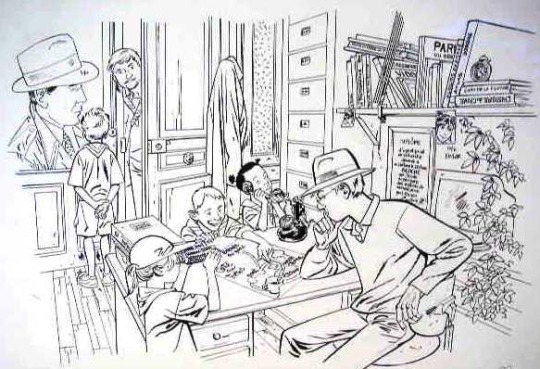
Alain Dodier: Jerome K Jerome Bloche
#alain dodier#Jérorome K Jérome Bloche#Illustration pour un calendrier scouts#comics#art#bande dessinée#private eye
9 notes
·
View notes
Text

79 notes
·
View notes
Text

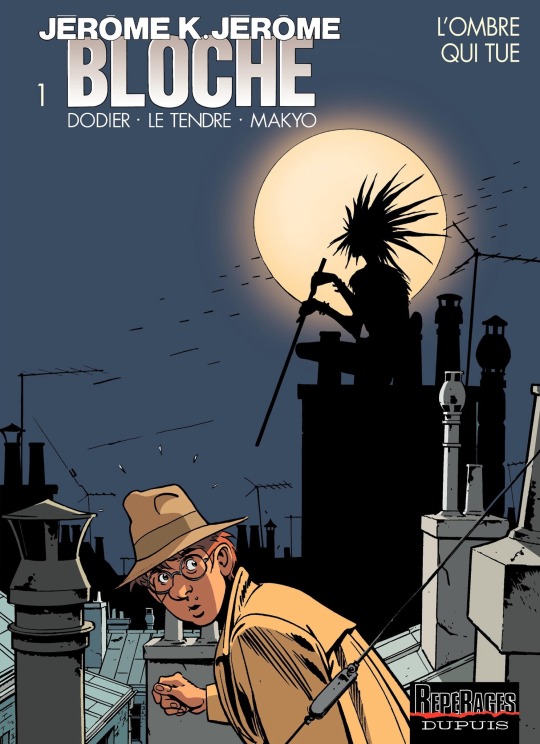
Alain Dodier “L’ Ombre Qui Tue” Jérôme K. Jérôme Bloche (1985) Source, source
2 notes
·
View notes
Text
Aurë entuluva! – Der Tag soll wieder kommen. J.R.R. Tolkien zum 50. Todestag
Buchvorstellung
Der Herr der Ringe ist ein einzigartiges und langlebiges Buch. Viel mehr als das, was man sich gemeinhin als einen Unterhaltungsroman vorstellt. Der vielschichtige Roman ist nur ein kleiner Teil von J.R.R. Tolkiens Schöpfung Mittelerde samt ihrer Geschichte und Sprachen.
Der Leser folgt der Handlung seiner Protagonisten wie einem Boot, welches über einen See fährt. So sieht man…

View On WordPress
#Alain Finkielkraut#Anna Bineta Diouf#Aurë entuluva Rezension#Aurë entuluva!#Aurë entuluva! – Der Tag soll wieder kommen. J.R.R. Tolkien zum 50. Todestag#Buchvorstellung#Charles A. Coulombe#Damien Bador#David Boos#David Engels#Der Herr der Ringe#Joseph Pearce#Marion du Faouët#Michael K. Hageböck#Rezension#Rezension Aurë entuluva#Ryszard Derdziński
0 notes
Text
A Joycean Odyssey
Above, James Joyce and his longtime partner Nora Barnacle, in Zurich, 1930. They would marry the following year when Joyce established residency in the UK. (SUNY Buffalo)
It began 103 years ago when the American literary magazine The Little Review published its latest installment of James Joyce’s landmark novel Ulysses—a chapter that featured an account of a wanker on a beach.
Jan. 20, 1934 cover…
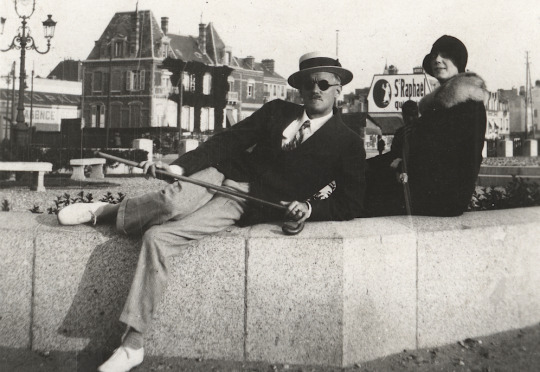
View On WordPress
#Adolph K. Kronengold#Al Frueh#Casino de Paree#Charles Boyer#Clifton Fadiman#Daniel &039;Alain&039; Brustlein#Dorothy Parker#E. Simms Campbell#Gardner Rea#Gilbert Bundy#Helen Hokinson#James Joyce#James Thurber#Janet Flanner#Lois Long#Otto Soglow#Robert Benchley#Robert Day#Sinclair Lewis#Ulysses#W.E. Woodward
0 notes
Text

Why These Imperfect Korean ‘Moon Jars’ Sell for Millions
Old, round, imperfect and beautiful — that’s how fans of Korean art describe the moon jar, or “dalhangari.”
These unassuming, plain white pots have entranced everyone from rapper RM, of K-pop sensation BTS, to philosopher Alain de Botton.
The former director of London’s Victoria and Albert Museum, Beth McKillop, has called the moon jar an “icon of Korean identity.” And if price is any indicator of popularity, one recently sold for over $4.5 million at a Christie’s auction.
This month, a rare example from the late 17th or early 18th century will go on sale at Sotheby’s in New York, where it’s expected to fetch more than $3 million.
“A large moon jar has always been expensive, but I think the big uptick in prices and value is… because their appeal is now global,” said Angela McAteer, Sotheby’s international head of Chinese art for the Americas and Europe, over video call. “You’ve got an international cohort of bidders competing for them, so it’s gone beyond the traditional connoisseur collecting community of Korean art.”

Huge price tags also result from the jars’ rarity. Although made for over a century in the royal kilns of Korea’s last kingdom, the Joseon dynasty, few are thought to exist today. Estimates for the number of larger ones (those more than 40 centimeters, or 15.7 inches, tall and wide) that have survived over the years range from 12 to 30.
Having passed through auction houses and antique dealers across the world, several of these are now in the collections of institutions like the British Museum and Boston’s Museum of Fine Arts, as well as in the hands of private collectors.
‘Owning a piece of happiness’
The first moon jars were created in the royal kilns in Gwangju (a city just outside Seoul, not the larger southern city of the same name) from 1650 to 1750. They were made from pure white porcelain and kaolin clay, and, following the neo-Confucian fashions of their day, the pots reflected values such as propriety, humility, frugality and purity. They were likely used at court and in upper-class homes as containers for food and liquids, or as decorative vessels.
In the mid-20th century, moon jars began gaining international appreciation thanks to influential admirers such as Japanese folk crafts scholar Yanagi Soetsu and British potter Bernard Leach, who bought one from a Seoul antique store in 1935. Leach once said that having a moon jar was like “owning a piece of happiness,” and would later give his to fellow potter Lucie Rie for safekeeping during World War II. It stayed in her studio until her death and was later acquired by the British Museum.
Charlotte Horlyck, lecturer in Korean Art History at the University of London’s School of Oriental and African Studies, wrote in the Art Bulletin journal that after World War II the moon jar “caught the attention of an early generation of postcolonial Korean artists and scholars who sought to restore Korean art history and national identity,” as the pieces “resonated with the visual language of international modernism and minimalism of the mid-20th century while remaining a distinctly Korean work of art.”
The moon jar’s allure
When Sotheby’s announced its forthcoming sale, the auction house described its 44-centimeter (17.3-inch) moon jar as an object that inspired, astounded and soothed those who “stand in its presence.” It’s a funny thing to say about a pot, to speak as if it’s alive, but the jars’ visceral, emotional impact on people is something that comes up time and time again in the literature.

Choi Sunu, a former director of the National Museum of Korea, has described the museum’s moon jars as being like companions, or muses that have inspired his writing and stirred his creativity. Bernard Leach admired the pots for their “natural unselfconsciousness.” In 2012, South Korea’s then-Unification Minister Yu Woo-ik used the pot as a metaphor symbolizing a reunified Korean peninsula (moon jars are created in two hemispherical pieces and joined in the middle).
More recently the rapper RM, of K-pop group BTS, posted a picture of himself hugging a modern-day moon jar on Twitter, telling fans that the pots made him feel calm.
“It’s hard for someone to really comprehend how a pot can make you feel that way,” said McAteer. “It has this real meditative presence. If you’ve sat in front of a great (painting by US artist, Mark) Rothko and you feel this kind of palpable energy emanate from it, and you could sit for hours and just feel something in its presence — the moon jar has that too.”
“The more you look at it, the more there is to see. It looks different from every angle,” she added. “We had real issues with the photography and the catalog because it looks like a different piece every time you rotate it, or you change the lighting. The surface is just alive, you know.”
“You can see how the glaze coalesces; you see these spontaneous bursts of this blush color that’s happening in the firing. You can lose yourself in its surface.”
Modern masters
Modern Korean potters have been inspired by the jars, and a number have come up with their own homages. Ceramist Kim Syyong covers his pots with a black glaze, while Yun Ju Cheol’s versions look spikier like a pufferfish and Choi Bo Ram’s unvarnished, textured blue vases have a denim-like quality.
Others, like Kwon Dae Sup, have looked to closely recreate the process used by the potters of yore. The 71-year-old ceramist produces unadorned white jars and allows for all the beautiful imperfections produced to shine through. He works out of a studio in Gwangju, where the royal kilns that produced moon jars were once located.


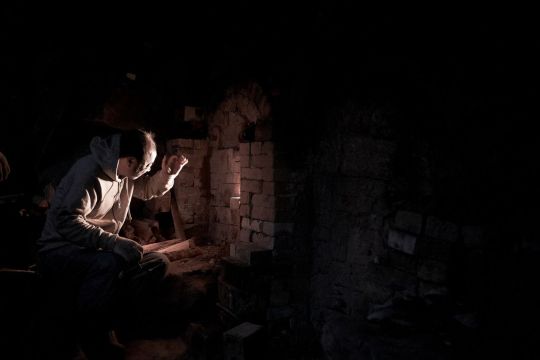
There’s a great deal of preparation that goes into making a moon jar traditionally. It’s labor-intensive: washing, sifting impurities from the clay, kneading and rolling it to remove air bubbles, carrying around these large hunks, not to mention hand throwing the clay itself to that oversized bowl shape without collapsing, and the work keeping a pine wood fire burning for 24 hours while the pot hardens in the kiln. Kwon also built his own kiln to replicate the old process as closely as possible.
“I do this because it’s fun,” he said in a phone interview. “Every time I make something, it’s novel … The quality of the material is different every time. The conditions in which I make the pots is new every time.”
Kwon said he also feels an emotional connection to the moon jar. As a student he was so moved by a one he saw in a Korean antique store that he decided they would be his life’s work. “They feel alive,” he said.
In a 2019 book on his work by Axel Vervoodt Gallery the potter is quoted saying he tries to produce art that needs no addition or subtraction. “I wish to create work that has an imposing presence but harmonizes with its surroundings regardless of where and when it is displayed. It should give peace of mind and a sense of comfort to all who look at it.”
By Christy Choi.
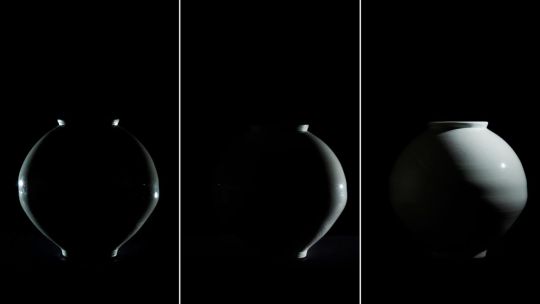
#Moon Jars#Why These Imperfect Korean ‘Moon Jars’ Sell for Millions#Dalhangari#Joseon dynasty#pottery#porcelain#Bernard Leach#Lucie Rie#Kwon Dae Sup#ancient artifacts#archeology#archeolgst#history#history news#ancient history#ancient culture#ancient civilizations#korean history#korean art#art#artist#art work#art world#art news#long reads
127 notes
·
View notes
Note
Hi! So, I really love the way you draw comics (that strike-back comic sheet of felix' looking at the srntimonsters is incredible). Do you have any... Tips for making them? Like, how do you think where each "square" will be placed, how to fit things in one page etc etc... How exactly did you learn to make comics like this (including all aspects)? Do you mind sharing?
Thank you !
Actually, I don't know if my comics are correct, if the composition is good etc... I went to art school but it had nothing to do with illustrations and comics (I was mostly doing logos, advertising posters etc...).
I posted my first comics on Deviantart, I was drawing Super Mario comics and it wasn't great. I was contacted by someone who took comic book classes and she made me a PDF with lots of tips and told me how to improve my comic book pages. And it was very helpful.
I can share with you some tips she gave me. Here are some tips given to me by "lepouvoirduflan" on deviantart :
-Read a lot of comics, even comics you don't like. It will allow you to discover a lot of different styles.
I have been drawing comics since I was a child. At the beginning, I was inspired by Asterix and Tintin comics.
More recently, a comic book that I really liked: "Be prepared" by Vera Brosgol. There is also "Lettres Perdues" by Jim Bishop. I wasn't a fan of the story but the drawing style and use of colors is incredible.
"Les sœurs Grémillet" by Gi Gregorio and Barbucci. "Les carnets de Cerise " by Joris Chamblain and Aurélie Neyret. I do not remember the story but the drawings and colors are very nice.
In a less childish style there is "Jerôme K. Jérôme Bloche " by Alain Dodier, Serge Le Tendre and Pierre Makyo.
There are also the W.i.t.c.h. comics that I like a lot in terms of composition.
If you understand French, you can watch this very interesting youtube channel about comics: https://www.youtube.com/@lefilsdebulle/videos
-Tips for comic book page composition:
Except that if you decide to do manga, you have to apply the Z rule. You must be able to read the panels from left to right and from top to bottom

Other examples with comic book pages:
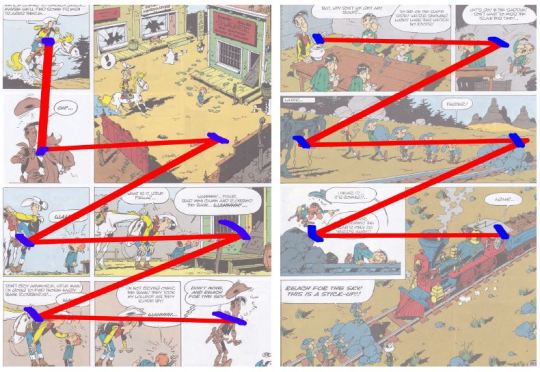
-Speech Bubbles:
I think speech bubbles are one of the most complicated things to incorporate into a comic page.
The reading must be fluid and there is an order to respect when several characters speak in the same panel.
Speech bubbles are also subject to the Z rule.
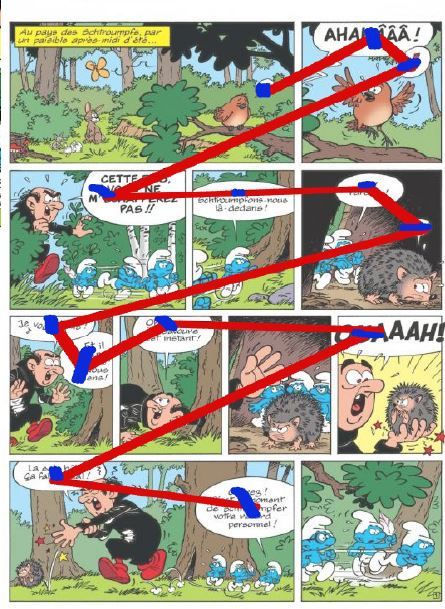
The speech bubbles must revolve around the characters.


Speech bubbles are of course subject to exceptions
They may be misaligned or not follow the Z rule, usually when the character is in a confused, scared, dreamy situation. But even if they are oddly placed, the speech bubbles are placed in a logical way.
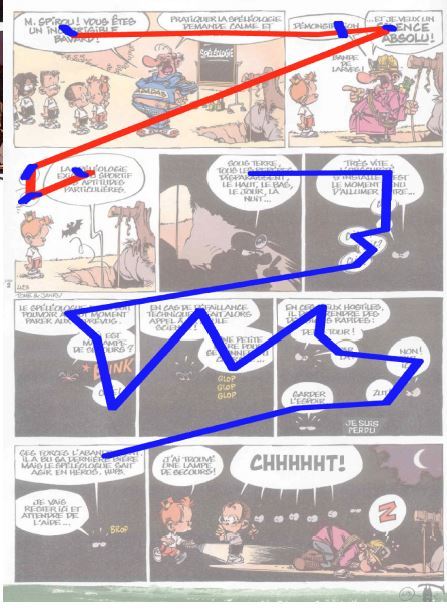
-There is not only one way to compose a comic page, there are many! That's why you have to make several sketches.
When I make a comic page, I write the dialogue and describe the action that takes place there. Then I make square panels and very rough drawings.

Then I work on the composition of the page and how I will place the panels.
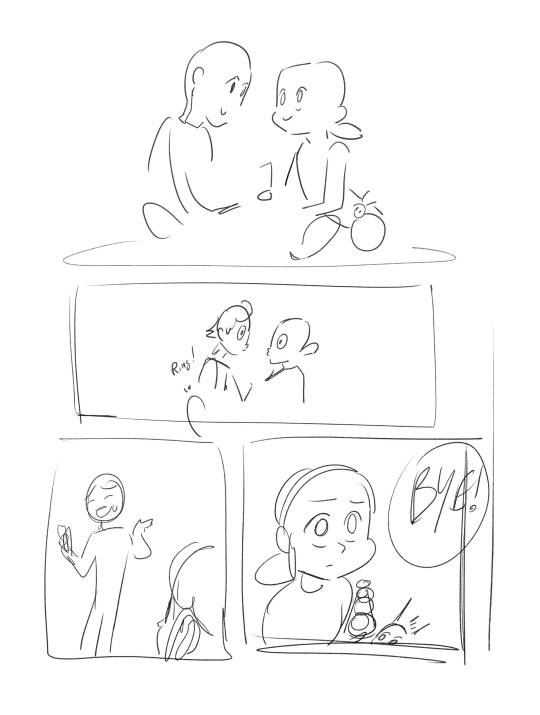
Then I did something cleaner. I changed the place of the first two panels (the comic is not finished yet, things can still change). I left room for the text but I still need to draw the speech bubbles.

I hope this helped you!
151 notes
·
View notes
Text



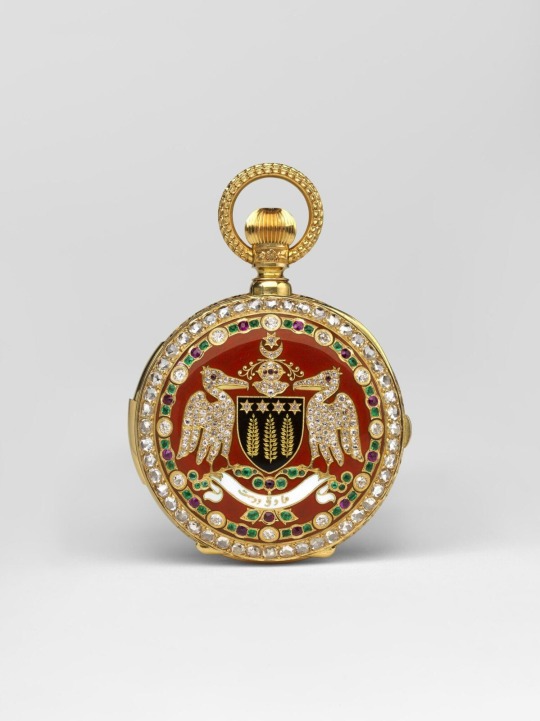
John Graff, Gold Hunter Case with Monogram and Coat of Arms of the Nawab of Bhawalpur Sadiq Muhammad Khan Abbasi IV, Circa 1890, Switzerland. Enamel, rubies and diamonds, 18k gold.
This extraordinary Minute Repeating pocket watch is a historically important timepiece and masterpiece of the horological arts. The watch features in its case the portrait of the Nawab of Bhawalpur, Sadiq Muhammad Khan Abbasi IV, and is signed JG. John Graff (1836-1902), the foremost Swiss portrait painter in enamels of the late 19th century.
The front of the case is superbly ornamented with the initials SMKA (Sadiq Muhammad Khan Abassi) and each of the letters, outlined in gold, is inset with precious stones – the letters S and M are inset with diamonds while the letter K is inset with emeralds and A with Burmese rubies. These rest on a background of red champlevé enamel. The circular case cover is further ornamented along its internal diameter with a sequence of diamonds at each of the hourly points and, between these can be seen a sequence of two emeralds flanking a central ruby. Beyond this circular border, a second circular register features a spectacular arrangement of diamonds.
The back of the case is decorated with the official blazon of the State of Bhawalpur, which consists of a shield, as usual in sable (black), three palm branches palewise in fess (gold), or, in chief four double quatrefoils argent seeded as diamonds on a gold background. On the crest, and above the shield, the helmet and gorge of a suit of armour (diamonds on a gold background); above that, on the upper part, a double branch in gold and, at the top, a seven-pointed star of diamonds on gold resting on a crescent argent. At the sides of the blazon as supporters, two pelicans, rousant argent billed and membered are shown with rubies for eyes and standing on an undulating branch of emeralds and a Burmese ruby. Below that, the escroll in white enamel with the family name ‘Abbasi’ in Urdu.
Behind the case front, the movement is a wonder of complications, at the time considered at the forefront of technical innovation – a perpetual calendar, a Moon phase, and a split-second chronograph as well as a Minute repeater. On a gold background, the dial contains radial Roman numerals with a bead-set diamond between each. The outer minute scale and other dial numerals are Arabic. Bead-set Burmese rubies are seen beneath the day and date dials.
Behind the obverse side of the case, the portrait of the Nawab shows him in three-quarter angle and dressed in ceremonial red costume with gold braiding. Around his neck is a heavy necklace of pearls between pairs of alternating emeralds and rubies. On his head, he wears a Bhawalpuri turban with cascading ropes of pearls and rubies. On the perimeter of the circular portrait, we observe the initials JG (John Graff). Encircling the portrait, on the gold frame, a sequence of arches are delicately engraved in millegrain design.
Above the case, a heavy pendant emerges and leads to the segmented crown; above that, the circular bow is ornamented with a braided surface.
The Nawab of Bhawalpur, Sadiq Muhammad Khan Abbasi IV (1862-99) was a young prince with immense wealth and eclectic taste. He famously commissioned an extraordinary silver bed by Christofle with moving automatons of four nude life-size bronze ladies representing European beauties, which winked and fanned him as music played. He was also a refined aesthete of the Muslim dynasty that claimed descent from the Abbasid caliphate. A great collector of gemstones, famous for his collection of Mughal spinels and rare artefacts; his glamorous and flamboyant attire and coiffure were a seamless synthesis of mysticism and haute couture.
Courtesy Alain Truong
18 notes
·
View notes
Photo

blorbo.
#i dont actually have anything to say its like early morning and i want to go bac k to sleep#pokemon#pokemon alain#pokemon steven#incombustibleshipping
16 notes
·
View notes
Text
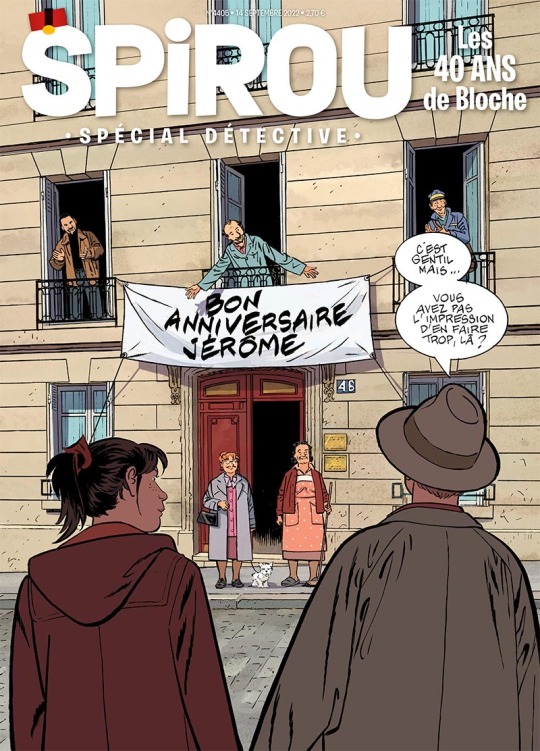
Jérôme K. Jérôme Bloche by Alain Dodier on the cover of Spirou 4405, September 14, 2022
14 notes
·
View notes
Text
Epic (Sundove88’s Version) Casting
12 year old Kalliope, or Kaylo, moves in with her eccentric scientist father Professor Kukui, who has been searching for tiny humanoid soldiers called Leafmen. They protect the forest that Kukui lives near from wicked creatures called Megabyogens and their malevolent leader King Byogen.
Kaylo as M. K. (Rhythm Heaven, @kayssweetdreams)
Haoyu Chang as Nod (Balan Wonderworld)
Wind Archer Cookie as Ronin (Cookie Run)
King Byogen as Mandrake (Healin Good PreCure)
Batetemonda as Dagda (Healin Good PreCure)
Daruizen, Shindoine, and Guaiwaru as Themselves/Mandrake’s Subordinates (Healin Good PreCure)
Ratchet and Bulkhead as Mub and Grub (Transformers Prime)
Queen Ilenia as Queen Tara (Unicorn Overlord)
Prince Alain as Himself/Queen Tara’s Son (Unicorn Overlord)
Millennial Tree Cookie as Himself/Queen Tara’s Advisor (Cookie Run)
Aristotle as Nim Galuu (Billie Bust Up)
Professor Kukui as Professor Bomba (Pokemon)
Professor Burnet as Herself/M. K.’s Mom (Pokemon)
Waddle Doo as Bufo (Kirby)
Churro Cookie as Finn (Cookie Run)
Rockruff as Ozzie (Pokemon)
Karate Joe as Lance (Rhythm Heaven)
Queen Teatinu as The Marigold Kid (Healin Good PreCure)
Here’s your hint to the next casting (It’s Dreamworks and just got a sequel):
🐔🥚🥧
#crossover casting#parody#blue sky#epic#epic blue sky#rhythm Heaven#Oc#balan wonderworld#bww#cookie run#precure#healin good PreCure#transformers#transformers prime#unicorn overlord#Billie bust up#BBU#Pokemon#Kirby
14 notes
·
View notes
Text

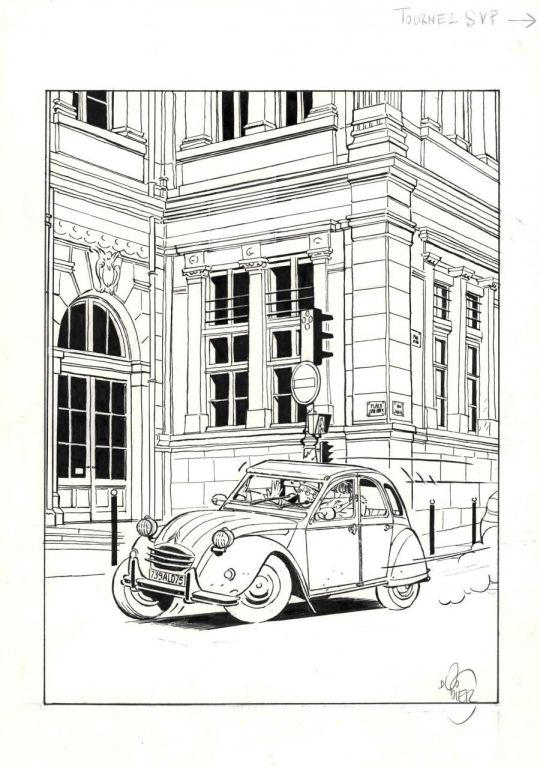
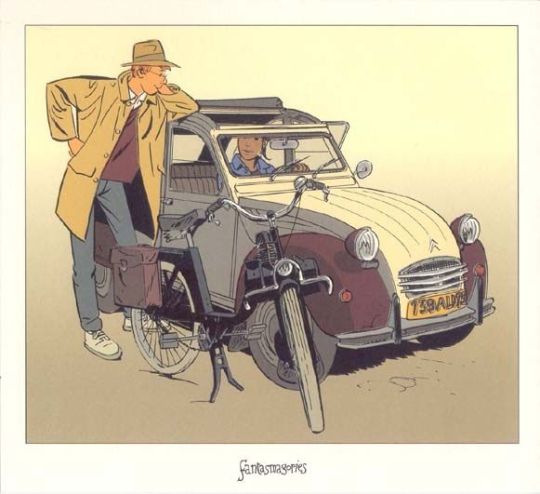

Jérôme K. Jérôme Bloche
by Alain Dodier
18 notes
·
View notes